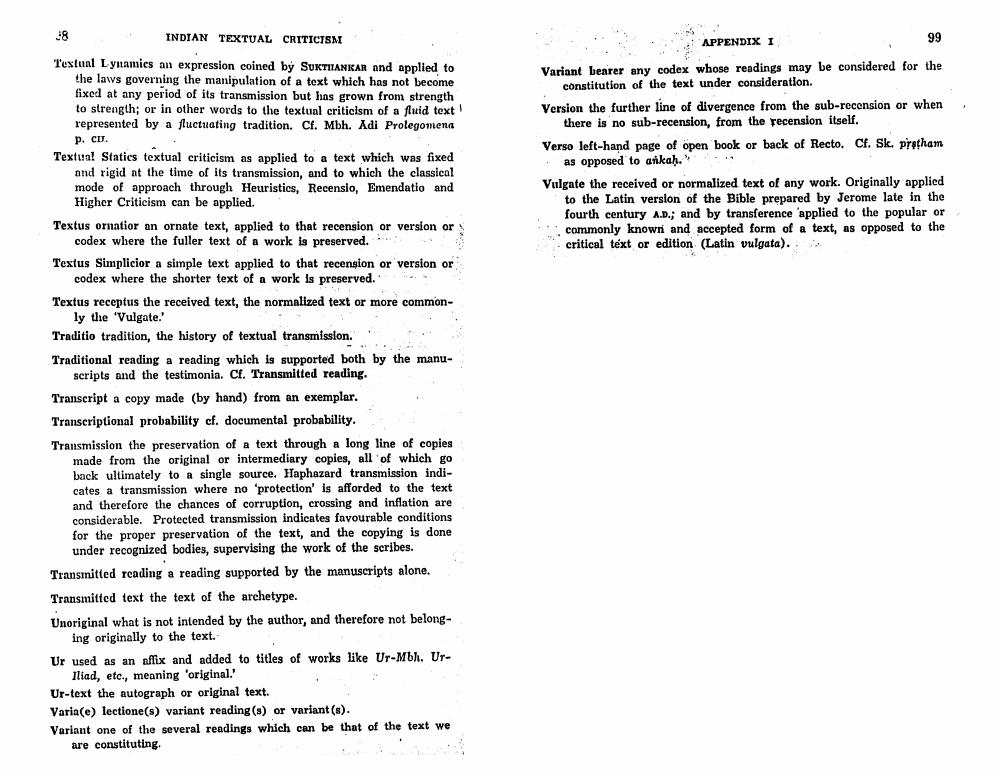________________ 18 - INDIAN TEXTUAL CRITICISM. :: APPENDIX I 99 , Variant bearer any codex whose readings may be considered for the constitution of the text under consideration. Version the further line of divergence from the sub-recension or when there is no sub-recension, from the recension itself. Verso left-hand page of open book or back of Recto. Cf. Sk. protham as opposed to ankah." Vulgate the received or normalized text of any work. Originally applied to the Latin version of the Bible prepared by Jerome late in the fourth century A.D.; and by transference 'applied to the popular or ' commonly known and accepted form of a text, as opposed to the critical text or edition (Latin vulgata). Textual Lynamics an expression coined by SUKTIIANKAR and applied to the laws governing the manipulation of a text which has not become fixed at any period of its transmission but has grown from strength to strength; or in other words to the textual criticism of a fluid text represented by a fluctuating tradition. Cf. Mbh. Adi Prolegomena p. CI.. Textua! Statics textual criticism as applied to a text which was fixed and rigid at the time of its transmission, and to which the classical mode of approach through Heuristics, Recensio, Emendatio and Higher Criticism can be applied. Textus ornatior an ornate text, applied to that recension or version or codex where the fuller text of a work is preserved. . Textus Simplicior a simple text applied to that recension or version or codex where the shorter text of a work is preserved. Textus receptus the received text, the normalized text or more common ly the 'Vulgate.' Traditio tradition, the history of textual transmission." Traditional reading a reading which is supported both by the manu scripts and the testimonia. Cf. Transmitted reading. Transcript a copy made (by hand) from an exemplar. Transcriptional probability cf. documental probability. Transmission the preservation of a text through a long line of copies made from the original or intermediary copies, all of which go back ultimately to a single source. Haphazard transmission indicates a transmission where no 'protection' is afforded to the text and therefore the chances of corruption, crossing and inflation are considerable. Protected transmission indicates favourable conditions for the proper preservation of the text, and the copying is done under recognized bodies, supervising the work of the scribes. Transmitted reading a reading supported by the manuscripts alone. Transmitted text the text of the archetype. Unoriginal what is not intended by the author, and therefore not belong ing originally to the text. Ur used as an affix and added to titles of works like Ur-Mbh. Ur Iliad, etc., meaning 'original.' Ur-text the autograph or original text. Varia(e) lectione(s) variant reading(s) or variant (s). Variant one of the several readings which can be that of the text we are constituting.




